How hard did people really work in the past?
Typical working hours from the Stone Age to the present day

Fox Photos/Getty Images
Think you put in fewer hours than a Stone Age hunter-gatherer or medieval peasant? Though you might imagine workers in the 21st century toil the least, the reality might come as something of a shock.
Looking back over prehistory and history, read on as we reveal how much time ordinary people really spent labouring away and how work-life balance compares today...
Hunter-gatherer in Stone Age Europe: three to five hours a day, 365 days a year

Leeloona/Shutterstock
By looking at modern hunter-gatherers, anthropologists and archaeology experts estimate their prehistoric counterparts probably worked just three to five hours a day, though the hours worked are likely to have fluctuated wildly during the year...
Hunter-gatherer in Stone Age Europe: three to five hours a day, 365 days a year

Ongala/Shutterstock
If food was plentiful, say thanks to a glut of berries or following a big game kill, bygone hunter-gatherers probably worked even fewer hours. They would also have taken time off to perform religious rituals, bury the dead, dabble in cave painting, and other non-work activities.
Labourer in ancient Egypt: eight hours a day, 131 days a year

Everett Historical/Shutterstock
A week in Ancient Egypt comprised of 10 days. Examining records from Deir el-Medina, the village where (non-slave) artisans who worked on the tombs in the Valley of the Kings lived, workers officially toiled away for eight hours a day with an hour's break for lunch at midday. Sounds pretty reasonable – and familiar – but they actually did this for eight days before resting for two days.
Labourer in ancient Egypt: eight hours a day, 131 days a year

Internet Archive Book Images, No restrictions, via Wikimedia Commons
However, it wasn't all work work work, as the records show that in reality labourers only laboured for 18 out of every 50 days. This time off would have been for religious festivals and leisure activities, but was also a time for them to spend weaving, brewing alcohol, and making clothing.
Farm worker in ancient Israel: eight hours a day, 296 days a year
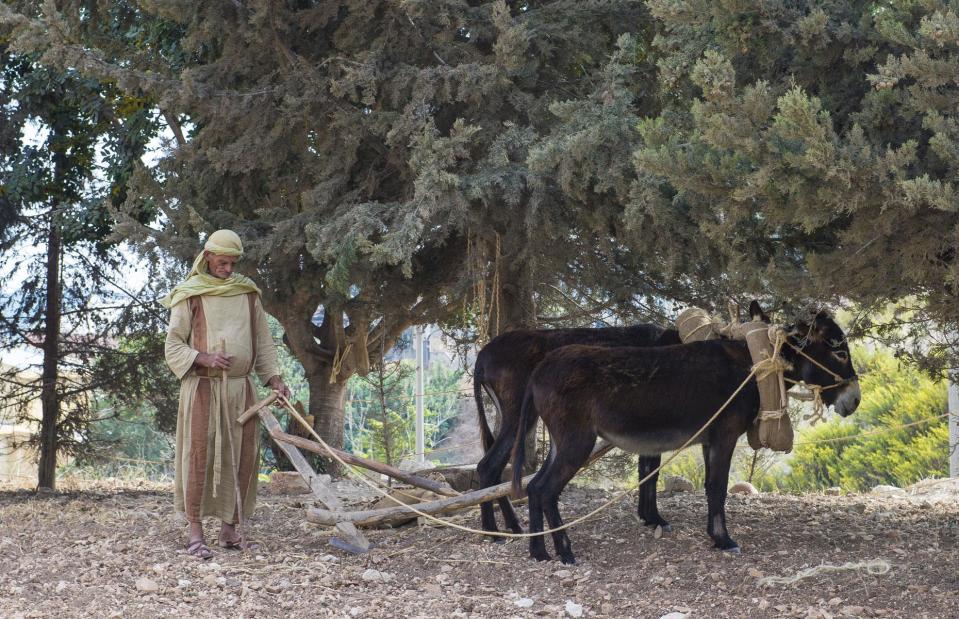
Kobby Dagan/Shutterstock
The typical farm worker in the Israel of 100 BC tended crops or engaged in other farm work for around eight hours a day. For a working day that began at dawn and concluded at dusk that's a heavy load, but three hours would have been set aside for prayer, while eating the day's main meal was likely to have taken an hour or so.
Farm worker in ancient Israel: eight hours a day, 296 days a year
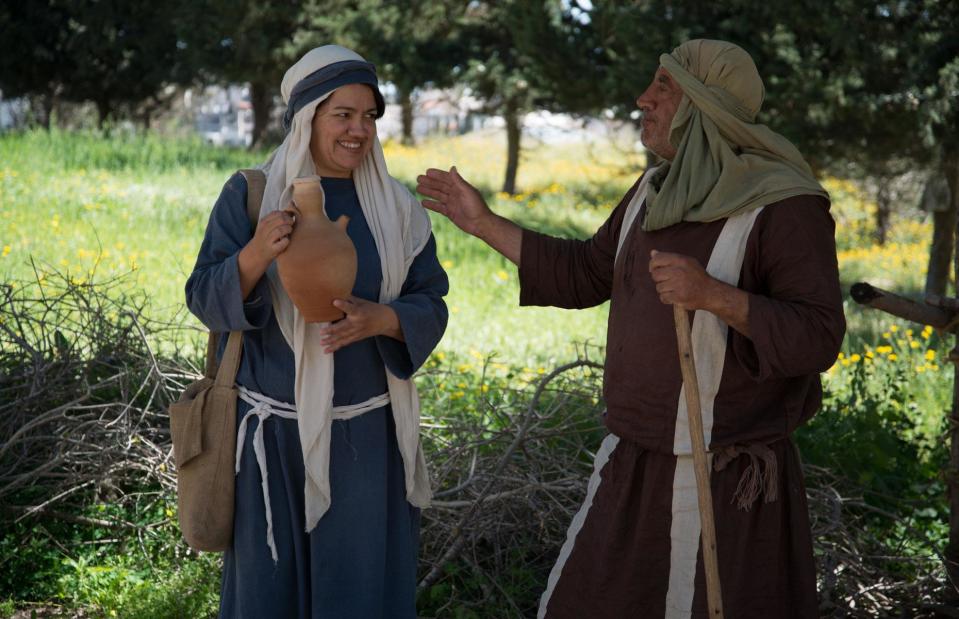
Pe3k/Shutterstock
Work was strictly forbidden on the Sabbath, as well as during a number of religious festivals: Rosh Hashanah (two days), Sukkot (a week), Shavuot (one day), and Passover (seven to eight days). Work was permitted at Purim, but many people would have spent the day enjoying the festivities. In addition, several work days a year are likely to have been taken off for weddings and other events.
Artisan in imperial Rome: six hours a day, 185 days a year

Andreas Solaro/AFP/Getty
Slaves in imperial Rome were at the grindstone 24/7, but most free artisans only worked six hours a day, from 6am to midday. Not only that but festivals were frequent. In fact, according to some historians, Romans who were not in chains ended up working only half the year.
Artisan in imperial Rome: six hours a day, 185 days a year

Regien Paassen/Shutterstock
The Romans made the most of this abundant leisure time, taking time out to hit the local baths, watch chariot races at the Circus Maximus, view gladiatorial competitions and theatrical performances at the Colosseum, attend public executions, and a whole lot more besides.
Peasant in medieval England: eight hours a day, 150 days a year
![<p>Limbourg Brothers [Public Domain], via Wikimedia Commons</p>](https://s.yimg.com/ny/api/res/1.2/FL3Z_oJGXFq_xsDR7RDB.Q--/YXBwaWQ9aGlnaGxhbmRlcjt3PTk2MDtoPTYxOQ--/https://media.zenfs.com/en/lovemoney_uk_264/ed7548e654fd1e4041d9edf4b6427baf)
Limbourg Brothers [Public Domain], via Wikimedia Commons
Life was far from easy for peasants in England in the Middle Ages, but their lot did improve after the Black Death when available land and average wages increased. According to Oxford don James E Thorold Rogers, the typical working day consisted of no more than eight hours of toil. Farm workers put in longer hours at harvest time but worked shorter days in winter when there are fewer hours of daylight.
Peasant in medieval England: eight hours a day, 150 days a year
![<p>Peter Isotalo [Public Domain], via Wikimedia Commons</p>](https://s.yimg.com/ny/api/res/1.2/SYJzbMbiZu4jIeQ2iyQviA--/YXBwaWQ9aGlnaGxhbmRlcjt3PTk2MDtoPTYxOQ--/https://media.zenfs.com/en/lovemoney_uk_264/f42d0a46308cd47ade520567f59fff57)
Peter Isotalo [Public Domain], via Wikimedia Commons
Sunday was the day of rest, but peasants also had plenty of time off to celebrate or mark Christian festivals. Economist Juliet Schor estimates that in the period following the Plague they worked no more than 150 days a year.
Artisan in the 14th-century Aztec Empire: nine hours a day, 274 days a year

Wolfgang Sauber, CC BY-SA 3.0 , via Wikimedia Commons
Workers in the Aztec Empire during the 14th century laboured away for four days, but didn't work on the fifth day when they went to the local market to stock up on provisions. They would also take time off to partake in religious festivals, many of which involved human sacrifice.
Artisan in the 14th-century Aztec Empire: nine hours a day, 274 days a year
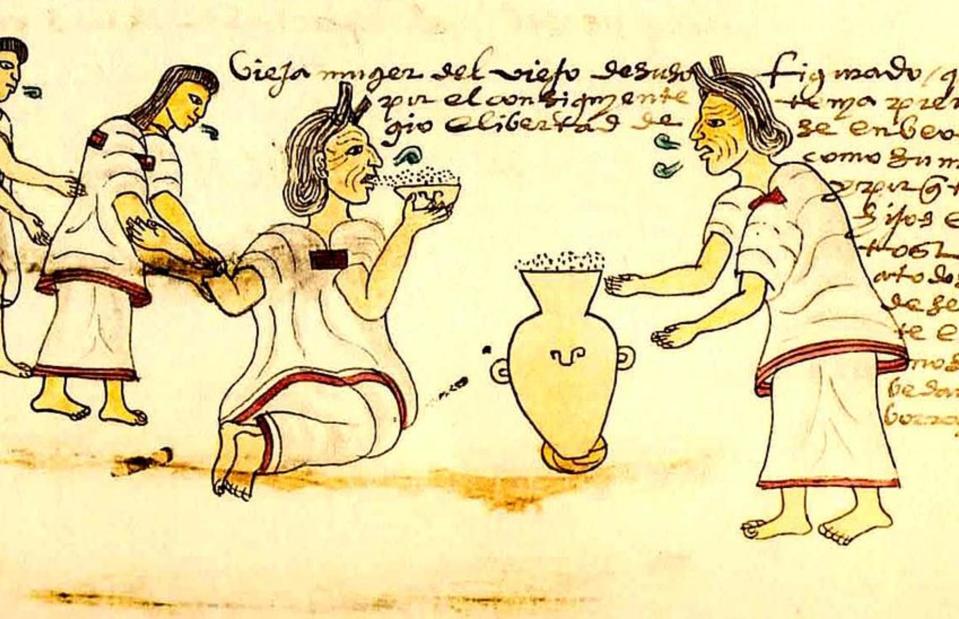
en:User:Billycuts, Public domain, via Wikimedia Commons
The year comprised of 18 months that were 20 days long, and at the beginning of each was a festival, so as well as the 73 days spent mooching around the market, Aztec labourers would have stopped work on 18 days of the year to participate in these monthly festivals.
Labourer in 17th-century France: 10 hours a day, 185 days a day
![<p>Jgremillot, [Public Domain], via Wikimedia Commons</p>](https://s.yimg.com/ny/api/res/1.2/KyQK.hjVRt6bRxl6_juBfA--/YXBwaWQ9aGlnaGxhbmRlcjt3PTk2MDtoPTYxOQ--/https://media.zenfs.com/en/lovemoney_uk_264/98f950b86cb8c81eb6b2f9ef10259ce7)
Jgremillot, [Public Domain], via Wikimedia Commons
During the reign of King Louis XIV, the workers of France had it tough, and hunger for the poorest was a fact of life. The typical working day was as much as 12 hours long, but two hours were set aside for lunch and perhaps an afternoon nap.
Labourer in 17th-century France: 10 hours a day, 185 days a year
![<p>Metropolitan Museum of Art [Public Domain], via Wikimedia Commons</p>](https://s.yimg.com/ny/api/res/1.2/LfozgUIR5f6IOPhbe7Sr6Q--/YXBwaWQ9aGlnaGxhbmRlcjt3PTk2MDtoPTYxOQ--/https://media.zenfs.com/en/lovemoney_uk_264/9a56211f6f484e1e4e99863a07d5056b)
Metropolitan Museum of Art [Public Domain], via Wikimedia Commons
Nevertheless, the Ancien Régime is said to have guaranteed peasants, labourers and other workers a total of 52 Sundays, 90 rest days and 38 religious holidays off per year, meaning they worked just 185 out of 365 days.
Unskilled worker in mid 18th-century England: 11 hours a day, 208 days a year
![<p>William Hogarth [Public domain], via Wikimedia Commons</p>](https://s.yimg.com/ny/api/res/1.2/HXcxbYQ_R2iW5Peq778iVg--/YXBwaWQ9aGlnaGxhbmRlcjt3PTk2MDtoPTYxOQ--/https://media.zenfs.com/en/lovemoney_uk_264/3c43dc2b31afb7cc172d0d4269226c1b)
William Hogarth [Public domain], via Wikimedia Commons
A 1998 study by historian Hans-Joachim Voth found that workers in London in 1750 worked 11 hours per day, five days a week. Sunday was the day of rest, but those in gainful employment also skipped work on Monday, which was dubbed 'Saint Monday' at the time.
Unskilled worker in mid 18th-century England: 11 hours a day, 208 days a year
![<p>William Hogarth [Public domain], via Wikimedia Commons</p>](https://s.yimg.com/ny/api/res/1.2/R5gMzGgtHgyiv6pU3iiKCw--/YXBwaWQ9aGlnaGxhbmRlcjt3PTk2MDtoPTYxOQ--/https://media.zenfs.com/en/lovemoney_uk_264/442c9ccab9d3b8e5d17b5fcdd3aff535)
William Hogarth [Public domain], via Wikimedia Commons
There were also 53 holy days during the year when labourers put down their tools and enjoyed a well-earned rest. All in all, Voth discovered that the average Londoner worked just 2,288 hours per year in the mid 18th century. That's just 208 days a year.
Factory worker in mid 19th-century England: 16 hours a day, 311 days a year
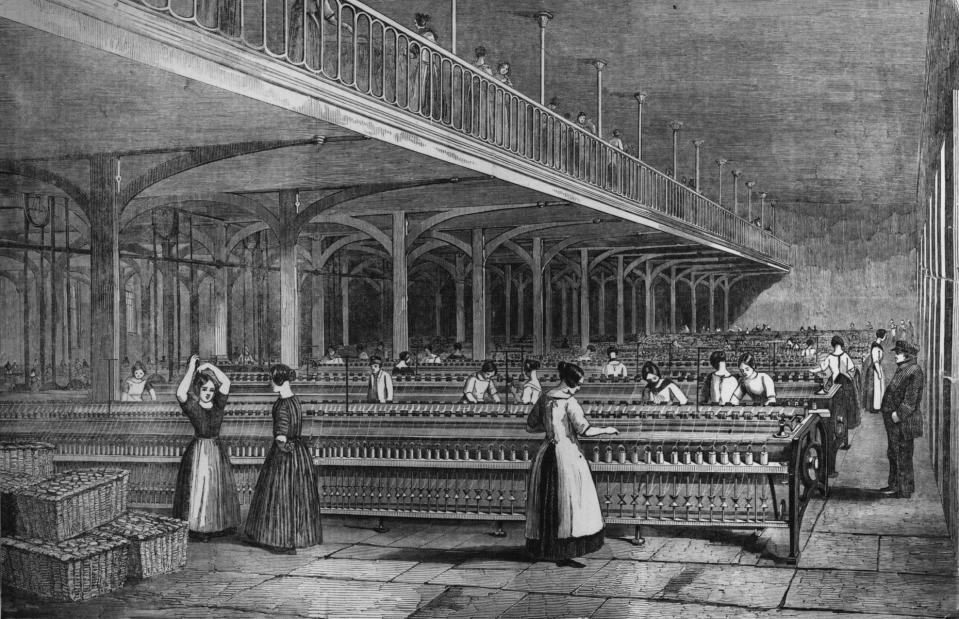
Hulton Archive/Getty
In contrast, the typical factory worker in mid 19th-century England toiled away for a shocking 16 hours a day, six days a week. Why the change? The Industrial Revolution was in full swing and factory owners could work their employees to the bone due to a lack of regulation and abundance of cheap labour.
Factory worker in mid 19th-century England: 16 hours a day, 311 days a year
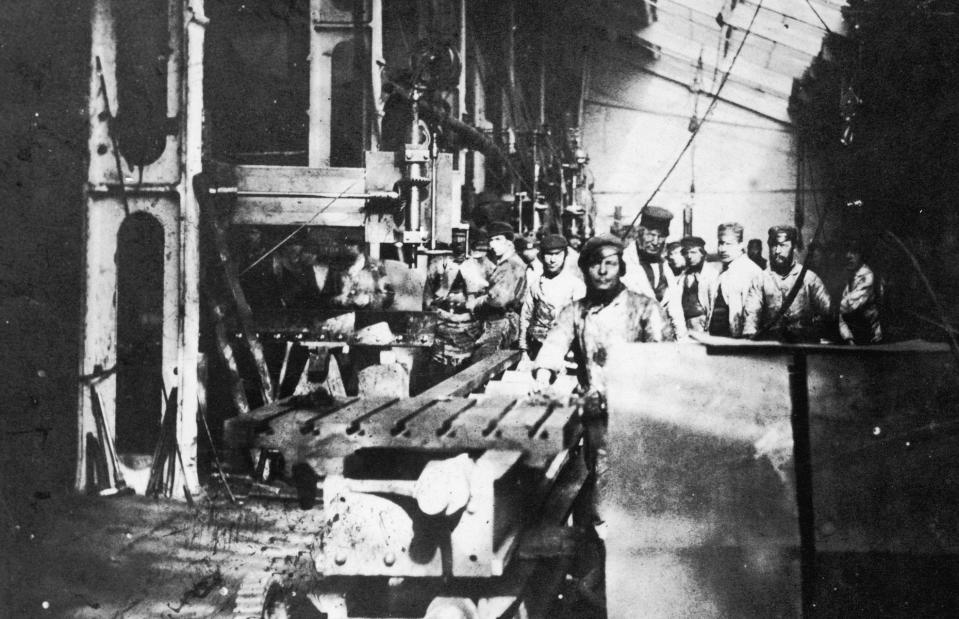
Hulton Archive/Getty
'Saint Monday' and the vast majority of holy day holidays had been ditched by this point with Sunday being the sole day of rest. The only other days workers could take off were Christmas Day and Good Friday as paid leave was non-existent and many people lived hand to mouth.
Factory worker in mid 20th-century America: eight hours a day, 243 days a year

Hulton Archive/Getty
By the early 20th century, collective bargaining by unions and government regulation had resulted in much shorter working hours in the Western world. The typical working day in the 1920s had shrunk to eight hours. In America in 1926, auto pioneer Henry Ford cut the working week at his factories to five days after noticing productivity increased when his employees worked 40 rather than 48 hours.
Factory worker in mid 20th-century America: eight hours a day, 243 days a year

Fox Photos/Getty Images
A slew of manufacturers followed suit. The 40-hour working week was enshrined in US law and adopted nationwide in 1940. At this time, there were eight public holidays: New Year's Day, Washington's Birthday, Decoration Day, Independence Day, Labor Day, Armistice Day, Thanksgiving and Christmas Day. Most workers took these days off and by the mid-1940s the majority enjoyed 10 days of paid leave per year.
Hunter-gatherer in late 20th-century Botswana: six hours a day, 130 days a year
![<p>Isewell [CC BY-SA 2.5 (https://creativecommons.org/licenses/by-sa/2.5)]</p>](https://s.yimg.com/ny/api/res/1.2/8qX4roW81YCIBHAjo1eDMA--/YXBwaWQ9aGlnaGxhbmRlcjt3PTk2MDtoPTYxOQ--/https://media.zenfs.com/en/lovemoney_uk_264/fa36ebd5b007969c5d2ac6e5743b3b8c)
Isewell [CC BY-SA 2.5 (https://creativecommons.org/licenses/by-sa/2.5)]
An anthropological study of the !Kung Bushmen of Dobe in Botswana that was carried out in the early 1960s revealed that the adults of the tribe worked six hours a day on average, two and a half days per week.
Hunter-gatherer in late 20th-century Botswana: six hours a day, 130 days a year

David Barrie/Flickr CC
This is a fraction of the hours most adults in developed countries were working at the time. In total, members of the tribe put in just 780 hours per year. Even the hardest-working individual was found to engage in only 32 hours' work a week, or 1,664 hours a year.
Hunter-gatherer in late 20th-century Venezuela/Colombia/Brazil: three hours a day, 349 days a year

Orinoquia Cambio Climático/Flickr CC
In 1987, a study of the Hiwi aka the Guahibo people who live in parts of Venezuela, Colombia and Brazil concluded that adults spent just three hours a day hunting and gathering food, and occupying themselves with other work such as building shelters.
Hunter-gatherer in late 20th-century Venezuela/Colombia/Brazil: three hours a day, 349 days a year
![<p>Fotofox [Public domain], via Wikimedia Commons</p>](https://s.yimg.com/ny/api/res/1.2/pV7RgI7v9wanJQCnIr7YNQ--/YXBwaWQ9aGlnaGxhbmRlcjt3PTk2MDtoPTYxOQ--/https://media.zenfs.com/en/lovemoney_uk_264/26c2bdc3580978e35cc4408a29a5c889)
Fotofox [Public domain], via Wikimedia Commons
Interestingly, the culture has no structured time sequences. There are 16 points in a typical year that are loosely marked, from the start of the dry and wet seasons, to specific days when certain fruit ripens or insects emerge, and these time periods vary. Assuming tribal members took time off on these special days, they probably worked around 1,047 hours a year.
Tech worker in early 21st-century China: 10 hours a day, 297 days a year

Humphery/Shutterstock
While the law in China limits the working week to 44 hours, it is frequently ignored by employers, particularly those in the technology sector where the so-called '996' work schedule is de rigueur. Staff are expected to work from 9am to 9pm, six days a week bar an hour's break in the middle of the day for lunch and an hour's respite in the evening to eat dinner. These figures are based on life before the coronavirus pandemic took place.
Tech worker in early 21st-century China: 10 hours a day, 297 days a year

ProStockStudio/Shutterstock
Much of Sunday is no doubt spent in bed recovering from such an exhausting working week. Adding to the woes of tech workers in the country, paid leave is usually limited to just five days a year, though they are entitled to 11 paid public holidays.
Office worker in early 21st-century Netherlands: 5.8 hours a day, 234 days a year

MBI/Shutterstock
Adults in the Netherlands have the shortest working week in the world at just 29 hours, according to the OECD. This levels out at just 5.8 hours per day, which would be considered part-time in many countries. Still, the Netherlands has the second lowest number of public holidays in the world at just seven. Government-sanctioned paid leave totals 20 days.
Office worker in early 21st-century America: 6.9 hours a day, 239 days a year

Rawpixel/Shutterstock
In America, the typical working week, according to the US Bureau of Labor Statistics, is 34.5 hours, which is considerably longer than the average in most European nations. But many Americans slog away for even longer periods of time.
Office worker in early 21st-century America: 6.9 hours a day, 239 days a year

MBI/Shutterstock
Unlike workers in Europe, who enjoy plenty of paid leave guaranteed by legislation and aren't afraid to take it, American workers average just 12 days off per year and refrain from work on 10 public holidays. Incredibly, US law doesn't actually require employers to grant their staff paid leave of any kind.
Working from home during the Coronavirus pandemic in the US or UK: up to 11 hours per day, up to 239 days a year

Shutterstock
When the COVID-19 pandemic swept the globe, most countries issued stay-at-home orders. While some employers had to furlough workers as they couldn't adapt to working outside of the workplace, many businesses pivoted to a working from home model, and lots of people are still working from home offices. While officially working hours remain the same, there have been growing reports that people working from home have ended up working longer hours than usual.
Working from home during the Coronavirus pandemic in the US or UK: up to 11 hours per day, up to 239 days a year

Shutterstock
In fact, home workers in the US, Canada, Austria and the UK have seen the amount of time they are logged into their computers increase by more than two hours per day, according to research by NordVPN Teams. Workers in the US and UK have seen their working day increase from nine hours on average to 11 hours.
Now read: The hardest-working nations in the world

 Yahoo Finance
Yahoo Finance 